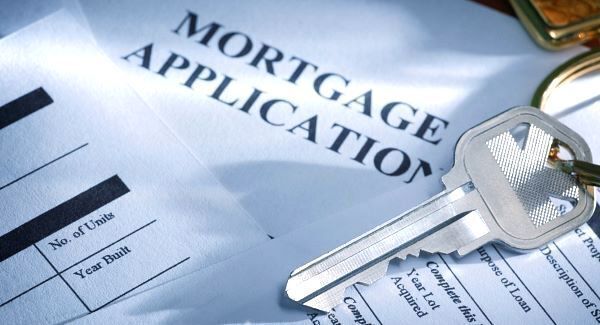
Latest figures from the Central Bank show that the average interest rate on a new mortgage in Ireland is 3.01%.
Although low for Ireland by historical standards, and a drop from 3.21% in July 2018, this compares to an average rate of 1.78% across the Eurozone and a rate of less than 1.00% in Finland — a country with a similar population to us.
Darragh Cassidy — of the independent price comparison and switching site Bonkers.ie — says that according to the Banking and Payments Federation, the average first-time buyer mortgage is now around €225,000.
This means that a typical first-time home buyer who’s borrowing that amount over 30 years will pay almost €143 a month more for their mortgage compared to the Eurozone average. That’s over €1,700 a year.
So why are we paying more?
“The level of home repossessions in Ireland is incredibly low by international standards,” says Cassidy.
In most European countries, a bank will take back ownership of a property within the space of a year or so if the loan has gone bad. This isn’t the case in Ireland where the number of repossessions, even in cases where the mortgage hasn’t been repaid in years, remains negligible due to the length and complexity of the process and the legal and political impediments faced by banks
While this may well be the right approach to take towards people who get into financial difficulty, it does mean mortgage lending is far riskier in Ireland than in other European countries and therefore the interest rates we’re charged are higher.
It also means fewer banks are interested in doing business here. The Irish mortgage market remains heavily concentrated in the hands of a few banks; mainly AIB, Bank of Ireland, and to a lesser extent Ulster Bank. Mario Draghi, the head of the European Central Bank even recently referred to it as a ‘quasi-monopoly’.
“And although competition in the market has heated up in recent times,” says Cassidy, “it’s still below where it should be and this has lead to higher rates.
“More competition would help bring down rates, but there’s anecdotal evidence that foreign lenders are being put off entering Ireland due to the riskier nature of lending here and the aforementioned issues around repossessions.”
A related point is that Irish banks are required to hold more capital in order to absorb losses if a recession hits and people can’t repay their loans.
A lack of capital was a big reason Irish banks got into so much trouble during the crash, so regulators now police banks more heavily to ensure lenders set aside enough capital against their loans, with riskier loans needing more capital.

“Because of the recession, banks in Ireland have a large number of loans on their books which are either in arrears or are not being repaid at all. In fact, the level of non-performing loans with Irish banks is way in excess of what you’d find in other European countries. And we already know that a bank will have difficulty repossessing a property in Ireland if the loan isn’t performing.”
What this means is that banks here have to set aside far greater levels of capital than banks in Europe because lending here is more risky. Indeed banks in Ireland need to hold around three times the amount of capital as the European average, according to a recent report by Goodbody stockbrokers. Put another way, Irish banks must hold €50 of capital for every €1,000 of mortgage lending versus just €16 in Europe and the UK.
Holding all this capital in reserve means banks have less money to generate profits elsewhere so this puts pressure on them to have higher mortgage rates and higher margins.
In a recent survey by broker mortgages4her.ie a fifth of mortgage customers in Ireland said that the banks’ cashback offers were the biggest lure when it came to choosing a lender.
Permanent TSB offers 2%, ESB and Bank of Ireland offer up to 3% cashback, while Ulster Bank will offer €1,500 towards your legal fees if you take out a mortgage with them. These types of incentives are not available in most other European countries. If they weren’t available here, this would probably lead to lower headline rates. Indeed, it’s telling that the two banks which offer the lowest rates in Ireland (Ulster Bank and KBC) offer little or nothing in the form of cashback incentives.
Sinead Buckley, General Manager of mortgages4her.ie is keen to warn customers to take a cautious approach to these offers.
“All may not be as it seems. I think people just need to remember that banks are not in the business of giving people free money without getting something in return. That’s not to say these deals are bad — you just need to make sure that you do all of the necessary calculations and computations before diving in.”
Cashback offers may help defray costs but it’s the lifetime cost of credit that prospective mortgage holders need to compare.

According to the same report by Goodbody stockbrokers, Irish mortgage rates are 1.7 times the Eurozone average. But when you factor in the cashback costs as well as the extra fee income many European banks generate through set-up and admin fees, this falls to 1.25 times the average.
“Irish banks also have a large number of tracker mortgages on their books,” says Darragh Cassidy. “These were popular during the days of the boom. Before the recession, banks could access money more cheaply and could survive on the 0.5% to 1% margin many trackers work off.”
In today’s climate however, these mortgages make far less money for the banks, so they’re recouping their losses by charging new customers higher rates.
Nor can we dodge the truth that Ireland is a small country. Compared to France or Germany there is a far smaller mortgage market so lenders here don’t have the same economies of scale as elsewhere. This impacts on the rates we’re charged too.
As Cassidy points out, although rates are high in Ireland it doesn’t mean there isn’t value to be found.
If you’re a first-time buyer who’s at the start of the mortgage journey, make sure you do your research and shop around before applying for a mortgage. There’s now a large variation in interest rates and cashback incentives across all the different lenders so find out who’s offering the best deal for you.
And if you already have a mortgage, then look into switching.
In recent times Irish mortgage holders have been reluctant to switch, which is crazy when the truth is that you could save up to €300 a month by switching.






